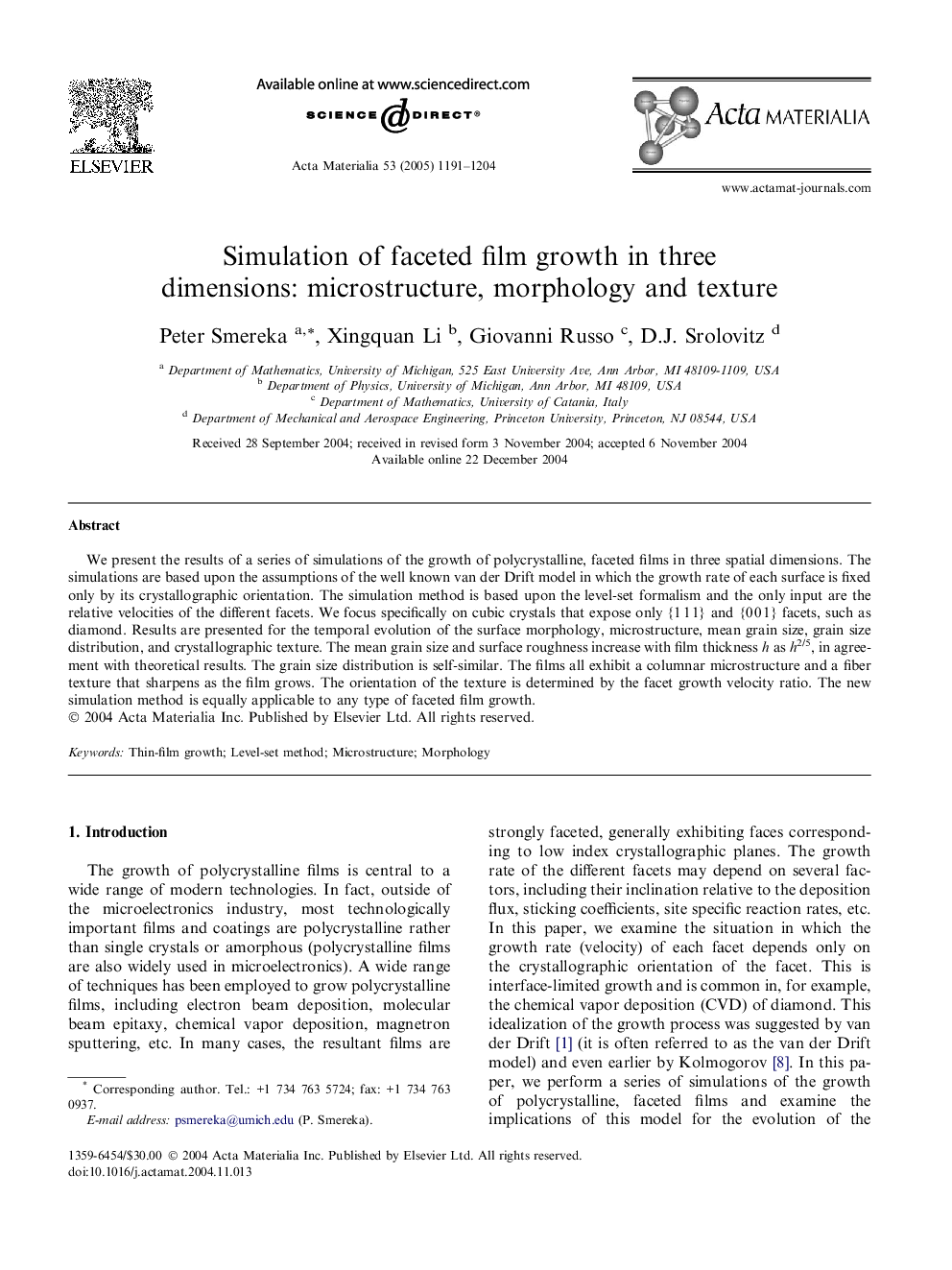| Article ID | Journal | Published Year | Pages | File Type |
|---|---|---|---|---|
| 10621159 | Acta Materialia | 2005 | 14 Pages |
Abstract
We present the results of a series of simulations of the growth of polycrystalline, faceted films in three spatial dimensions. The simulations are based upon the assumptions of the well known van der Drift model in which the growth rate of each surface is fixed only by its crystallographic orientation. The simulation method is based upon the level-set formalism and the only input are the relative velocities of the different facets. We focus specifically on cubic crystals that expose only {1Â 1Â 1} and {0Â 0Â 1} facets, such as diamond. Results are presented for the temporal evolution of the surface morphology, microstructure, mean grain size, grain size distribution, and crystallographic texture. The mean grain size and surface roughness increase with film thickness h as h2/5, in agreement with theoretical results. The grain size distribution is self-similar. The films all exhibit a columnar microstructure and a fiber texture that sharpens as the film grows. The orientation of the texture is determined by the facet growth velocity ratio. The new simulation method is equally applicable to any type of faceted film growth.
Related Topics
Physical Sciences and Engineering
Materials Science
Ceramics and Composites
Authors
Peter Smereka, Xingquan Li, Giovanni Russo, D.J. Srolovitz,
